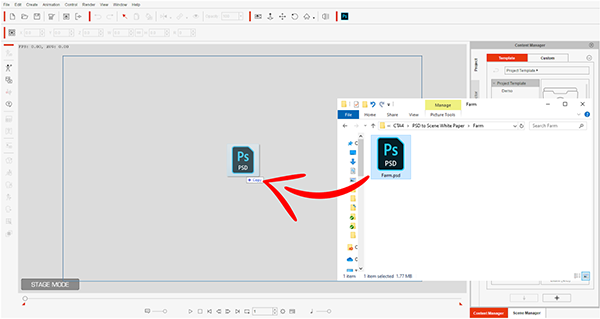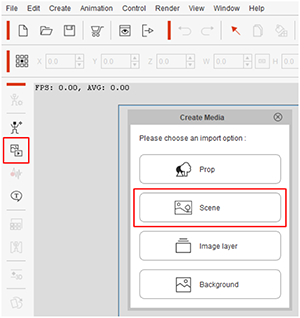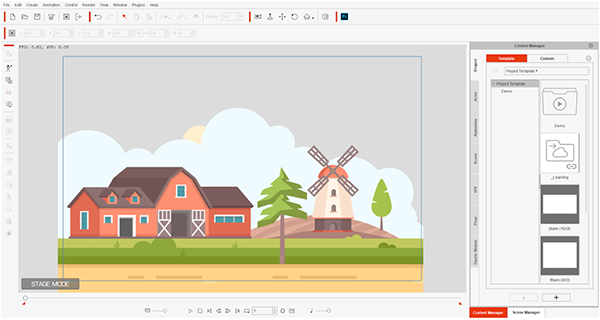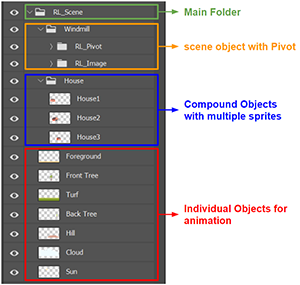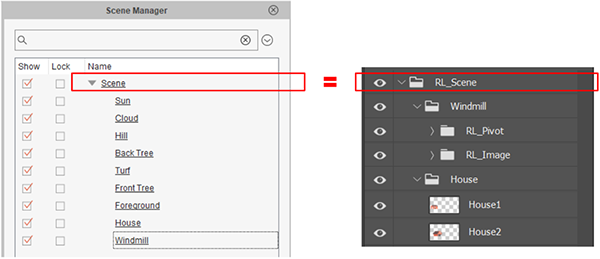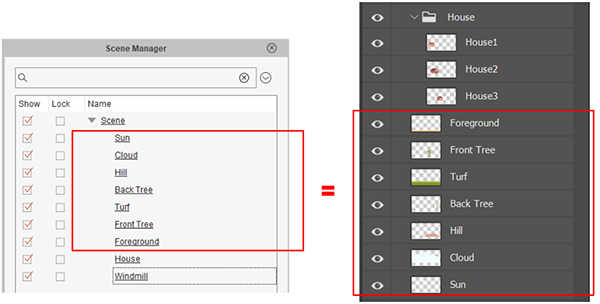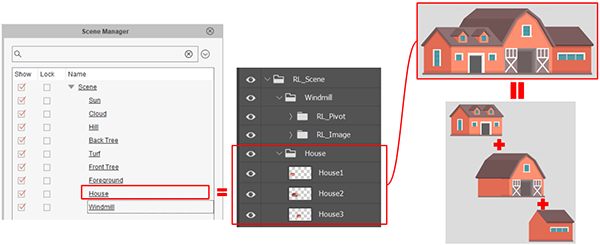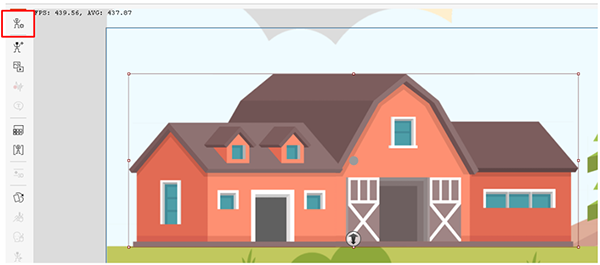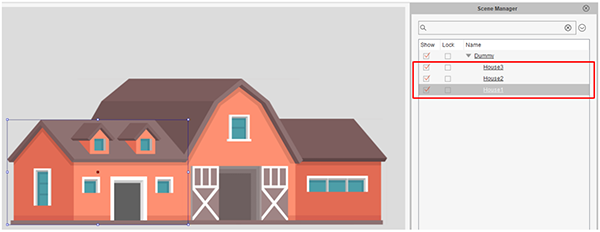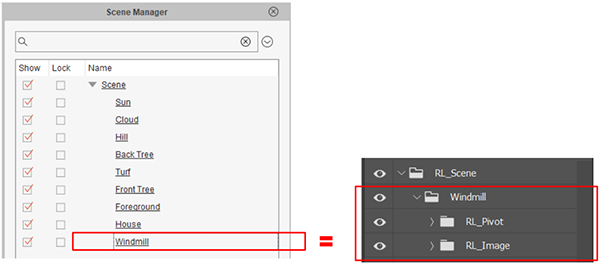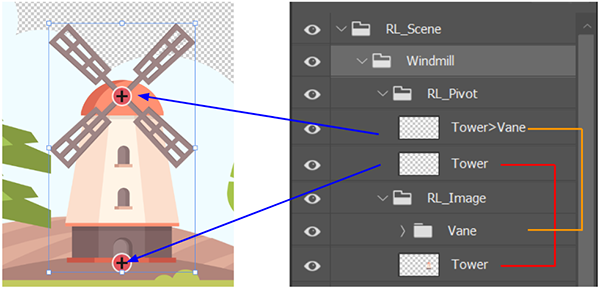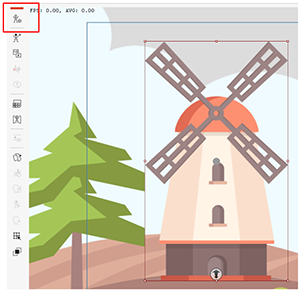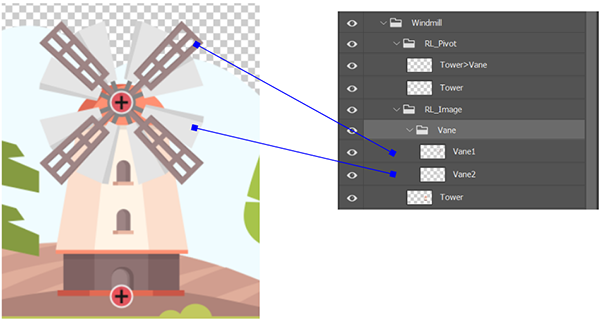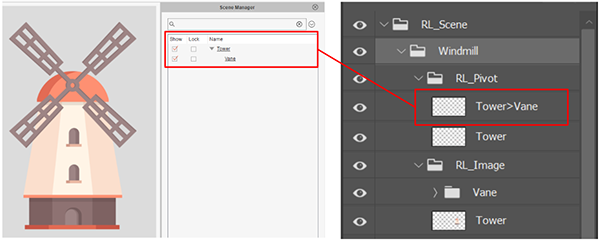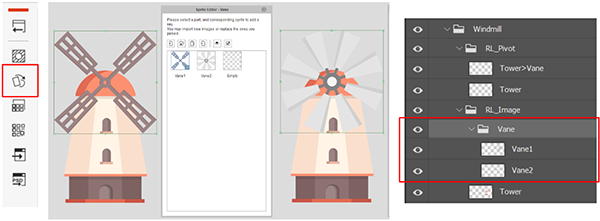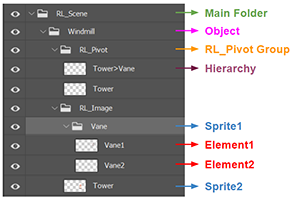Difference between revisions of "Content Dev:PSD to CTA Scene Conversion"
Chuck (RL) (Talk | contribs) m (→Correspondence between CTA Object and PSD Data Structure) |
Chuck (RL) (Talk | contribs) m (→Main Folder) |
||
| Line 33: | Line 33: | ||
=== Main Folder === | === Main Folder === | ||
| + | |||
| + | A standard structure of the Scene PSD file must have a Group: RL_Scene, all objects to be entered into the CTA must be built under this group level. | ||
[[File:Cta_psd_to_scene_05.png]] | [[File:Cta_psd_to_scene_05.png]] | ||
| + | |||
| + | *Open CTA's Scene Manager. | ||
| + | *Import type will be automatically designated to Scene because we have been defined the PSD file’s root as RL_Scene. | ||
[[File:Cta_psd_to_scene_06.png]] | [[File:Cta_psd_to_scene_06.png]] | ||
| + | |||
| + | === Individual Objects for Animation === | ||
| + | |||
| + | *CTA will convert all the layers under the RL_Scene single layer (without Folder) into individual objects. | ||
| + | *Since this type of object does not define a pivot, the pivot point will be set to the center of the image by default. | ||
[[File:Cta_psd_to_scene_07.png]] | [[File:Cta_psd_to_scene_07.png]] | ||
| + | |||
| + | === Compound Objects with Multiple Sprites === | ||
| + | |||
| + | *Expand “House” folder in Photoshop and compare with “House” Object in CTA’s Stage. | ||
| + | *CTA will collect the folder under the RL_Scene as an object. | ||
[[File:Cta_psd_to_scene_08.png]] | [[File:Cta_psd_to_scene_08.png]] | ||
| + | |||
| + | From the PSD layer, there are three objects in the House group; We can enter Composer to find these three objects. | ||
[[File:Cta_psd_to_scene_09.png]] | [[File:Cta_psd_to_scene_09.png]] | ||
| + | |||
| + | Turning on the Scene Manager in Composer, one can be observe that CTA still has a layered object structure under the folder. Therefore, you can define the size and position of individual objects in Composer if needed. | ||
[[File:Cta_psd_to_scene_10.png]] | [[File:Cta_psd_to_scene_10.png]] | ||
| + | |||
| + | === Compound Prop with Pivot === | ||
| + | |||
| + | CTA Scene Template provides a definition of Compound Prop with Pivot in PSD. | ||
[[File:Cta_psd_to_scene_11.png]] | [[File:Cta_psd_to_scene_11.png]] | ||
Revision as of 20:17, 24 October 2019
Contents
Introduction
PSD to Scene functionality allows you to create a layered data inside CTA by importing a *.psd file right into CTA. Once imported the Scene Manger will maintain the original layers and groups of the PSD file making it convenient to perform subsequent editing in CTA, such as animation production and 3D camera adjustments.
The following sections will describe the PSD to Scene workflow and explain how the PSD data structure is interpreted inside CTA.
PSD to CTA Scene Workflow
There are two ways to import a CTA file (ex: Farm.psd)
Method 1: You can drag the PSD file directly into the stage.
Method 2: Open the PSD file by clicking on the Create Media button and select the Scene type.
Once the file is imported then the elements of the PSD file are deployed into the stage.
Correspondence between CTA Object and PSD Data Structure
Use any PSD tool to open the Farm.psd example file and examine the structure in the layer panel to the right. The types that make up different structures can be divided into four categories: Scene Root, Single Layer, Compound Prop, and Compound Prop with Pivot. The following will compare the format conversions of these four structures corresponding to CTA.
Main Folder
A standard structure of the Scene PSD file must have a Group: RL_Scene, all objects to be entered into the CTA must be built under this group level.
- Open CTA's Scene Manager.
- Import type will be automatically designated to Scene because we have been defined the PSD file’s root as RL_Scene.
Individual Objects for Animation
- CTA will convert all the layers under the RL_Scene single layer (without Folder) into individual objects.
- Since this type of object does not define a pivot, the pivot point will be set to the center of the image by default.
Compound Objects with Multiple Sprites
- Expand “House” folder in Photoshop and compare with “House” Object in CTA’s Stage.
- CTA will collect the folder under the RL_Scene as an object.
From the PSD layer, there are three objects in the House group; We can enter Composer to find these three objects.
Turning on the Scene Manager in Composer, one can be observe that CTA still has a layered object structure under the folder. Therefore, you can define the size and position of individual objects in Composer if needed.
Compound Prop with Pivot
CTA Scene Template provides a definition of Compound Prop with Pivot in PSD.
